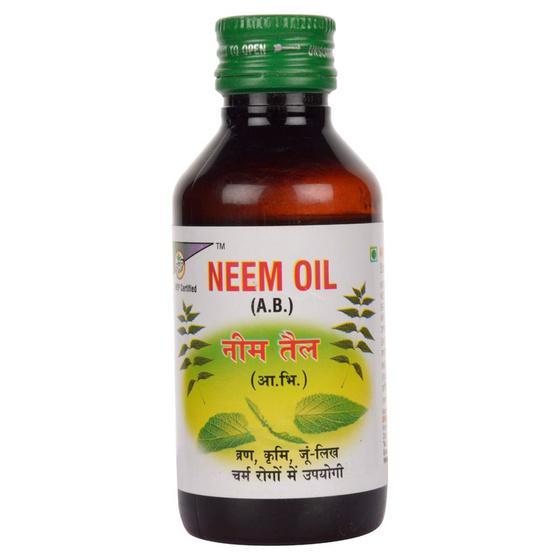NEEM OIL (COST: RS.60/-)
₹60.0
Pure neem oil.
Can be used as a natural insecticide and
pesticide for plants,
A eco-friendly and green alternative to the
chemical insecticides and pesticides.
Pure Neem Oil Rs.60:
Embracing eco-friendly products transforms waste into wealth, fostering sustainability and mitigating environmental impact. Innovative initiatives champion the conversion of discarded materials into valuable resources, paving the way for a circular economy.
To commence this virtuous cycle, recycling emerges as a key player. Plastics, paper, and metals, once destined for landfills, undergo a metamorphosis. These materials are reimagined, reincarnated into new products, reducing the demand for virgin resources and curbing pollution.
Biodegradable alternatives further revolutionize our consumption patterns. Products derived from natural materials seamlessly integrate into the ecosystem, leaving minimal traces. This shift not only reduces the burden on landfill sites but also curtails the persistence of harmful substances in the environment.
In the realm of waste-to-wealth, upcycling emerges as a creative force. Discarded items find a second life, elevated into functional and aesthetically pleasing artifacts. From repurposed furniture to fashionable accessories, upcycling not only minimizes waste but also showcases the beauty of sustainable design.
In the business landscape, companies increasingly adopt a cradle-to-cradle approach. This entails designing products with their end-of-life in mind, ensuring that materials can be easily disassembled and reused. Such practices not only enhance resource efficiency but also cultivate a mindset of responsibility within the industry.
Pure Neem Oil Rs.60: The waste-to-wealth paradigm extends beyond tangible goods to energy production. Biomass, a byproduct of organic waste, becomes a valuable energy source through anaerobic digestion or incineration, contributing to the renewable energy matrix.
In conclusion, the transition to eco-friendly products and the waste-to-wealth philosophy signifies a revolutionary stride towards a sustainable future. By reimagining waste as a valuable resource, society not only mitigates environmental harm but also forges a path toward a regenerative and harmonious relationship with the planet.
You must be logged in to post a review.
Q & A
1. Agricultural Practices and Resource Efficiency
Neem (Azadirachta indica) is a hardy tree that thrives in arid and semi-arid regions, requiring minimal water and fertilizers compared to other crops. This adaptability reduces the need for intensive irrigation and chemical inputs, which are significant contributors to the carbon footprint of agricultural products. The cultivation of neem trees can also improve soil health and prevent erosion, further enhancing its sustainability.
References:
- Jayaraman, V., & Manickam, V. (2009). "Neem: A Tree for Solving Global Problems." In Sustainable Agriculture Reviews.
- Akinmoladun, Afolabi, & Oboh (2011). "The Potentials of Neem (Azadirachta indica) in Sustainable Agriculture and Environmental Conservation." Journal of Sustainable Development.
2. Low Energy Input in Processing
The extraction of neem oil generally involves mechanical pressing rather than energy-intensive processes. Cold-pressing is a common method that requires less energy and does not involve harmful solvents or high temperatures, which helps in maintaining a low carbon footprint.
References:
- Khan, M. (2003). "Neem Oil Production and Extraction Processes." In Journal of Chemical Technology and Biotechnology.
- Dhingra, S., & Harkut, S. (2004). "Cold-Pressing of Neem Oil: Efficiency and Benefits." Industrial Crops and Products.
3. Biodegradability and Non-Toxicity
Neem oil is biodegradable and non-toxic, which means it does not contribute to long-term environmental pollution. Its natural degradation reduces its overall environmental impact, contributing to a lower carbon footprint compared to synthetic alternatives.
References:
- Krishna, G., & Singh, S. (2007). "Environmental Impact of Neem Oil: A Review." Environmental Science & Technology.
- Schmutterer, H. (1995). "The Neem Tree: Source of Unique Natural Products for Integrated Pest Management, Medicine, Industry, and Other Purposes." Wiley-VCH.
4. Carbon Sequestration
Neem trees sequester carbon dioxide from the atmosphere as they grow, contributing positively to the reduction of greenhouse gases. This aspect of neem cultivation helps offset some of the carbon emissions associated with its production.
References:
- Mohan, G., & Kumar, V. (2015). "Carbon Sequestration Potential of Neem Trees." Journal of Forestry Research.
- Reddy, S. S., & Reddy, A. R. (2011). "The Role of Neem in Carbon Sequestration and Greenhouse Gas Reduction." Global Ecology and Biogeography.
5. Sustainable Harvesting and Use
Neem trees have a long lifespan and can be harvested sustainably over many years without requiring replanting as often as annual crops. The use of neem oil for various purposes, including agriculture, medicine, and personal care, ensures that the entire plant is utilized effectively, minimizing waste and further supporting its sustainability.
References:
- Kumar, N., & Sharma, P. (2008). "Sustainable Harvesting of Neem Trees for Oil Production." Sustainable Agriculture and Rural Development.
- Kumar, P., & Rajendran, P. (2013). "Utilization of Neem Oil: A Sustainable Approach for Various Applications." Journal of Agricultural and Food Chemistry.
General Inquiries
There are no inquiries yet.

















Reviews
There are no reviews yet.